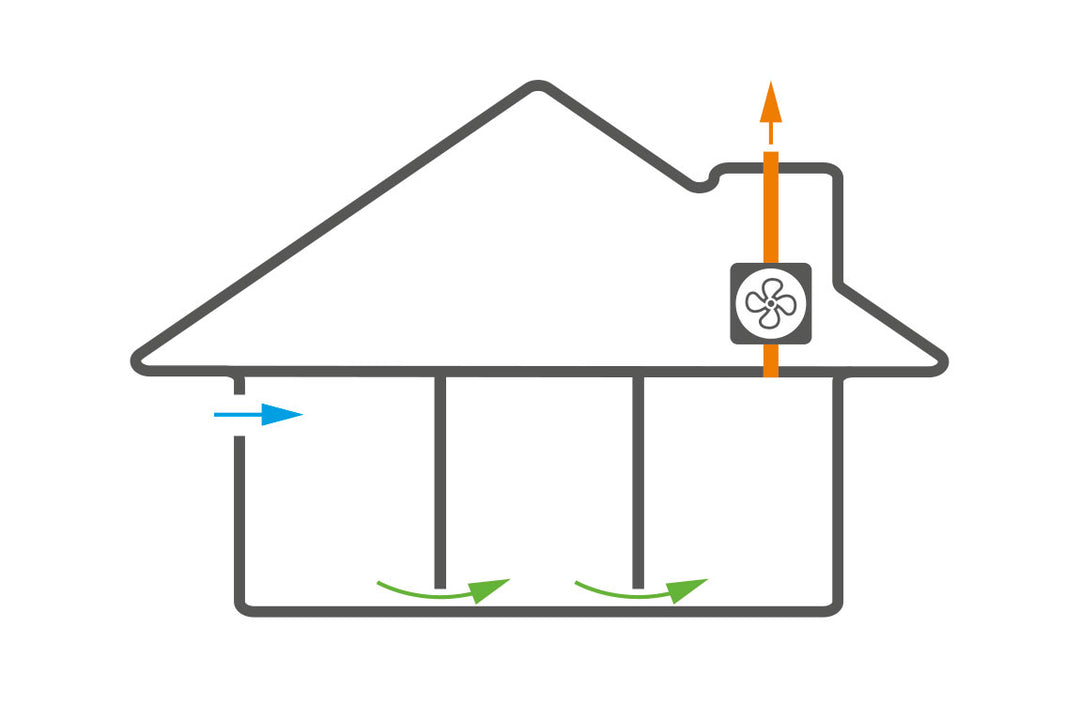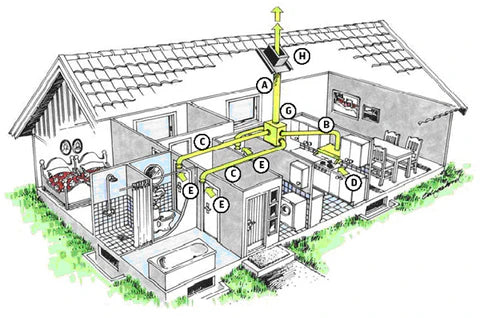
Central exhaust
Central exhaust, often called mechanical exhaust, is a common form of residential ventilation in many homes. This type of ventilation began to be installed in Norway in the late 1970s. The principle is that there is an exhaust fan placed in the attic, which is connected to a common pipe system from wet rooms, toilets and kitchens. The exhaust fan sucks out used air from the home, and in this way helps to create a negative pressure in the home. This allows new, fresh air to flow in from outside through valves in walls and windows.
Advantages and disadvantages
The advantages of a central exhaust system are that the house is well ventilated, and it is a relatively simple and affordable solution to maintain.
The disadvantages are that the valves do not clean the air. Furthermore, the air that comes in through the valves can be experienced as a cold draft in the winter. The risk is that people will then choose to close the valves, which leads to insufficient ventilation.
Another disadvantage is that this ventilation solution does not have any form of heat recovery. The new air that comes in must be heated, which results in high energy costs and does not meet today's energy saving requirements. For this reason, this ventilation solution is no longer installed in new housing construction.
A) Exhaust pipe. B) Kitchen exhaust. C) Bathroom exhaust. D) Kitchen hood. E) Wet room exhaust valve. G) Fan motor. H) Roof cap/Exhaust.


